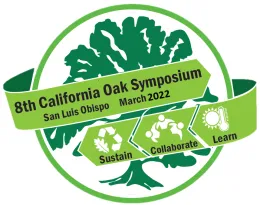#35

Participatory Field Gene Banks: A Novel Climate Change Adaptation Strategy for California Oaks
Blair McLaughlin, Hampshire College
Alissa Fogg, Point Blue Conservation Science
Climate change already is causing range contraction and loss of genetic diversity at some oak species’ trailing edges. Edge populations, most exposed to climatic extremes, may contain adaptive traits important for a species’ survival in a changing climate. Thus, the loss of trailing edge genetics may reduce possibilities for human-assisted gene flow and increase the likelihood of extinction. Oaks genetic conservation is challenging – acorns cannot be preserved in traditional seed vaults, and living conservation within botanic gardens is prohibitively costly. In a novel approach, we propose climate-adaptive, dispersed, land manager-participatory field gene banks to conserve threatened, trailing edge oak genetic diversity. Such field gene banks also present an opportunity to evaluate assisted gene flow as a climate change adaptation strategy.
To test the viability of this approach, we used blue oak (Quercus douglasii), which experienced extensive recent drought-related trailing edge dieback. In a cooperative effort between researchers and land managers dedicated to stewarding these oaks into the future, we translocated seedlings from nine threatened trailing edge sites to 12 common garden sites across the central/northern parts of the range. We also established a manipulative experiment with rainout and irrigation treatments at Hopland REC. Performance of both local and trailing edge seedlings was sufficient to establish a viable population in a restoration context. Additionally, in very dry conditions trailing edge seedlings showed lower levels of herbivory and disease, indicative of drought-adaptive traits that could benefit local populations as climate change progresses.
While assisted gene flow is a new, relatively high-risk strategy, the risk of losing narrow-ranged, endemic oaks in a changing climate is also high. The dispersed field gene bank maintains options as transplants can be removed before reproductive maturity if needed, and trailing edge genetic resources will be preserved in multiple locations even as they are lost in situ.
